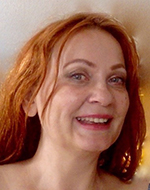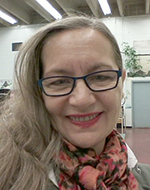Page Content
Embrace the value of pedagogical collaboration

 We had known each other for years as colleagues, occasionally meeting at art events around the city. A month ago we needed to meet more purposefully to go over some documents together. As so often happens among teachers, our conversation eventually turned more directly to educational topics. We were soon sharing ideas and personal philosophies connected to teaching theory. The truth was that secretly we both were looking for something deeper — a true collaborative partnership. That night we agreed on a time to meet again.
We had known each other for years as colleagues, occasionally meeting at art events around the city. A month ago we needed to meet more purposefully to go over some documents together. As so often happens among teachers, our conversation eventually turned more directly to educational topics. We were soon sharing ideas and personal philosophies connected to teaching theory. The truth was that secretly we both were looking for something deeper — a true collaborative partnership. That night we agreed on a time to meet again.
A week later we took a corner table at a Second Cup that would soon become a regular meeting place. It was at that moment, when we both collapsed into laughter while considering tough pedagogical issues and began finishing each other’s sentences, that we realized we had found a perfect collaborative partner in each other! We still wonder what the other patrons thought when they saw two intense scholarly women acting like teenagers having so much fun.
Why would we bother to invest our time and resources into a collaborative relationship? Traditionally, teaching has been a lonely profession. Research on the subject indicates that most commonly teachers work in relative isolation and make decisions alone. As visual art teachers in an optional subject area, where there is often only one teacher in a school, we educators rely mostly on ourselves for innovative ways to deliver the curriculum. Even though there are creative opportunities easily available on the Internet (i.e. Pinterest, online courses or YouTube), this is still “arm’s length” collaboration that misses the most important component of ongoing direct contact with another professional. Recently, school boards wisely have recognized this dilemma and, by encouraging teacher collaboration, are helping us to resolve these issues.
So we toyed with the idea of working together. To provide a framework for effective teamwork, we first searched to find a workable definition of collaboration. We were surprised to learn that there was not much information available on what collaboration actually is. Finally, we decided to craft our own definition.
We hoped collaboration could be more than mere verbal exchanges or sharing project ideas. Instead, we wanted to build an ongoing pedagogical relationship together as teachers to enable more complex involvement. In order to accomplish this, we needed to reconsider our ideas and understanding of the importance of collaborative approaches over teacher autonomy as well as ensure we had found the right person.
So how did we know we’d found the right collaborative partner? We needed someone who was like-minded, by which we meant compatible in intellectual style. Our ways of thinking about art had to be of the same standard and quality so that the collaboration wouldn’t turn into a mentorship, which is a different yet valuable relationship. We also considered it beneficial for both teachers to teach in the same division (i.e. grades 10 to 12). In addition, we wanted someone who was open-minded to a variety of ideas, who was willing to reflect and analyze on a continuous basis; a lifelong learner who strives to improve and expand his or her knowledge. To clarify, this didn’t mean that the individual had to have the same skill sets, teaching style or individual and creative strengths. Most important, the person needed to possess a deep commitment to exploring the possibilities inherent within a long-term professional relationship. Together, we seemed a perfect fit.
At present, we are at the beginning stages of our professional collaboration, examining various methods that will be valuable to our teaching practice. We decided that meeting on an ongoing basis was foundational. During our biweekly meetings, we share classroom practices to compare and analyze them for their effectiveness. For example, we are looking at how to help our students use the IB Visual Arts Journal more successfully. We have started the process of eliminating our preconceived ideas to open ourselves to new possibilities for best classroom practices. We understand this part of our collaboration as action research within the classrooms: trying, examining and improving.
We also wish to write about educational topics to enrich our art education community. Future plans include presentations at teachers’ conferences to offer our contribution to the profession. As 21st-century educators, we see ourselves as part of the larger learning community. We invite other teachers to explore the possibilities of collaboration and look forward to their contributions! ❚
Izabella Orzelski-Konikowski is a fine arts teacher at École Greenfield School and Old Scona Academic High School in Edmonton.
Brenda Savella is a fine arts teacher at M.E. LaZerte High School in Edmonton.
